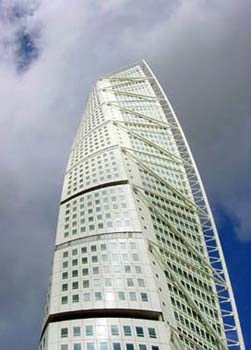 We are not talking about some weird story or gruesome act, rather the new twist on high-rise buildings around the world.
We are not talking about some weird story or gruesome act, rather the new twist on high-rise buildings around the world.
The Council on Tall Buildings and Urban Habitat (CTBUH) recently reported on the top 28 twisted buildings around the world. It is amazing to see how far the structural engineering and the building trades have come over the last decade since “Turning Torso” was completed in Malmo, Sweden in 2005. The building, designed by Santiago Calatrava Architects & Engineers, was the first of the “twisted kind”.
Novel at first, other major twisted high-rise buildings have been built in the intervening years as noted in the article written by David Malone, Associate Editor of Building Design and Construction.
When I was in architecture school long ago and far away, we discussed the possibility of twisting a tower and were dismissed by our professors as “dreamers” and not designing for the real world clients.
The first time that a prospective client asked me to work with his company on a twisted residential tower for Houston, I laughed and told him that structurally it was difficult, if not impossible, and at the very least expensive to build. Little did I know that the newest generation of building designers and “dreamers” are now the “new reality” in many parts of the globe.
Why would anyone want to build a twisted design in the first place? When working with supertall buildings, the twist can reduce the wind loads on the building and take advantage of the solar angles in a way that works to increase the use of “daylighting” and to improve the sustainability of the building. Not to mention the amazing variety of views that can be created for the residents and tenants in these buildings.
The latest technology of 4D and 5D BIM help make these designs realistic and buildable. Also the elevatoring systems are workable as long as they are in the core of the building and at the rotation points of the structure. The new technology in elevatoring that allows for horizontal as well as vertical movement will lay the groundwork for some even more exciting “twists and turns" in future buildings.
Take a look at the designs; very interesting. If you have the time, go to Google Earth to see them in their urban environment.
I would be interested to hear from someone who lives or offices in one of the top 28. If you have seen any comments, let us know.


